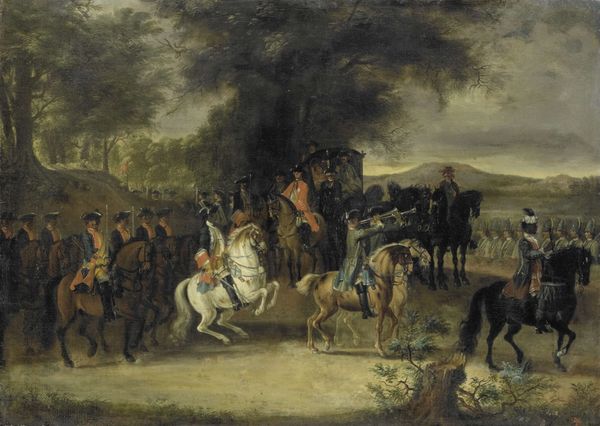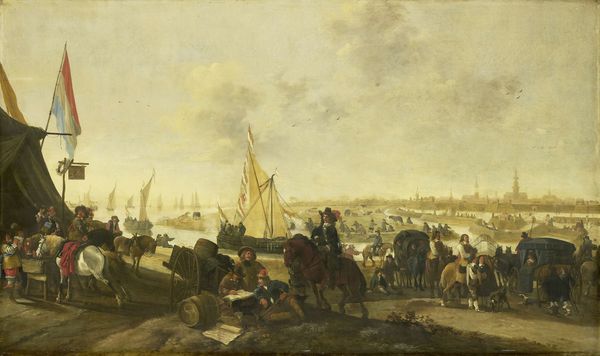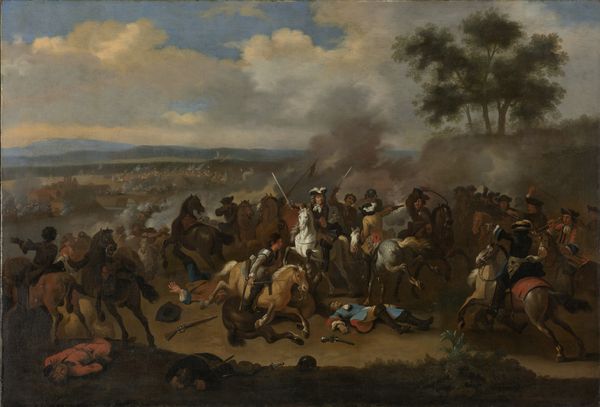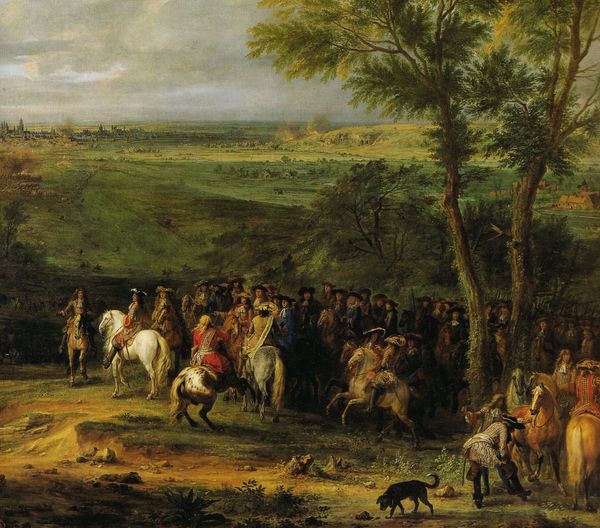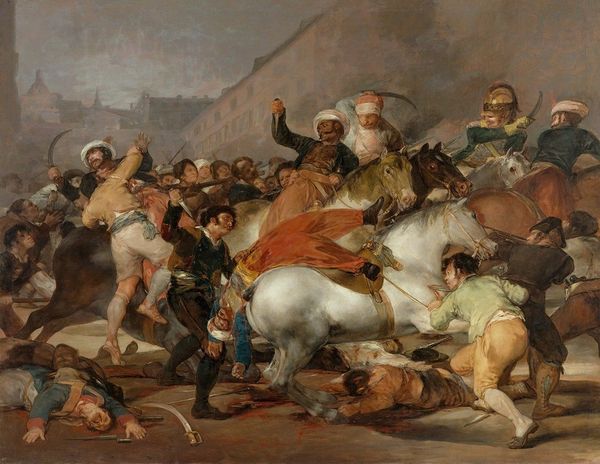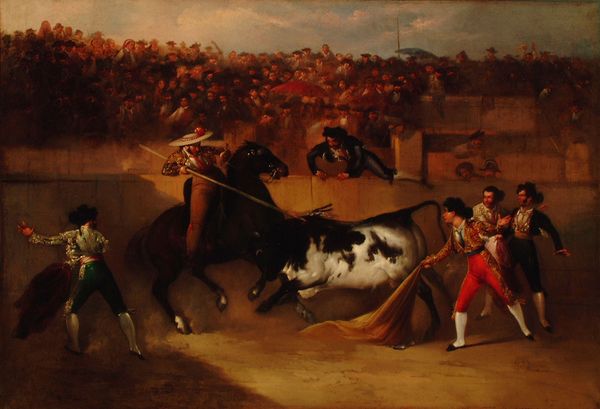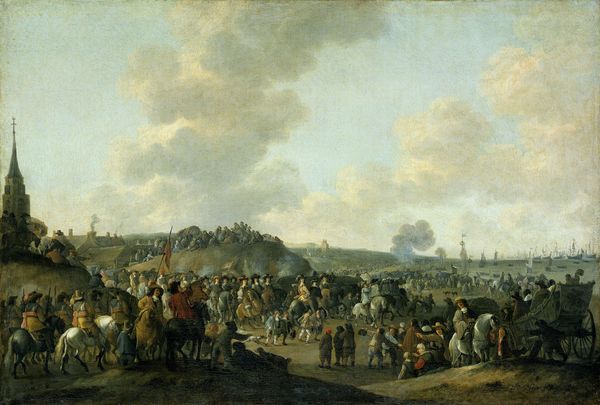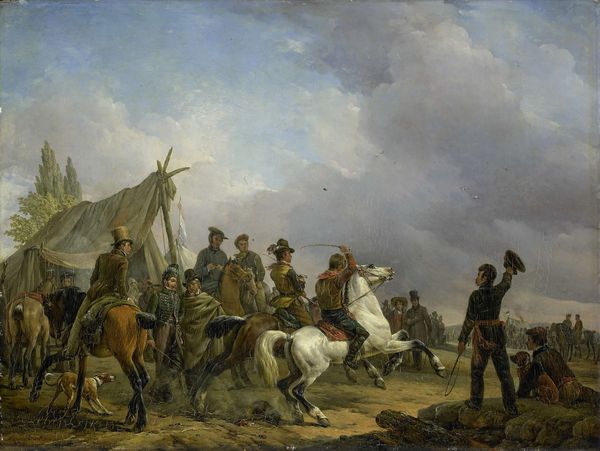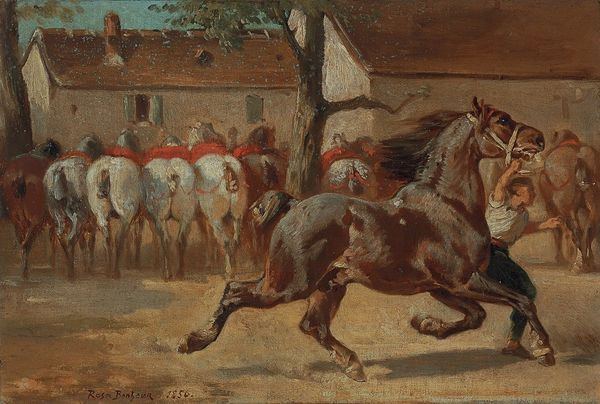
painting, oil-paint
#
painting
#
oil-paint
#
landscape
#
figuration
#
oil painting
#
romanticism
#
genre-painting
Dimensions: 45 x 72 cm
Copyright: Public domain
Curator: This is "A Village Bullfight" by Francisco de Goya, painted in oil on panel around 1814. It currently resides at the Real Academia de Bellas Artes de San Fernando in Madrid. Editor: The first thing that strikes me is the texture. Look at the layering of paint, almost like a build-up of earth in that ring. It gives a tangible weight to the scene. Curator: Absolutely. Goya is known for capturing the raw intensity of Spanish culture, often critiquing its traditions while simultaneously being drawn to them. Bullfighting, of course, embodies that tension. Editor: And you can feel that tension in the hurried brushstrokes. The way the figures are almost blurred, yet each component of the action has a certain weight – the bull, the figures scrambling. How do you see this reflecting the context of its creation? Curator: Considering it was painted shortly after the Peninsular War, a period of immense social and political upheaval in Spain, the bullfight as spectacle can be interpreted as a commentary on the power dynamics within Spanish society and, potentially, on the violence inflicted by the Napoleonic invasion. Goya witnessed and depicted the horrors of war, so even in depicting a local amusement, there are potential allegories. Editor: So it’s more than just a genre painting? Considering its materiality – oil paint, a readily available and manipulatable substance – do you think Goya was making a statement through his process? Curator: In a way, yes. While the technique itself isn't groundbreaking, Goya used it here to capture a 'moment' rather than an idealised depiction. This grounds the spectacle of the bullfight into the realness of the village. Look closely, the people surrounding the arena appear as rough and worn. Editor: Exactly. I’m interested in the role of labor here too; the labor involved in building the ring, raising the bull, training the matadors, and, of course, Goya's physical labor to bring it to life on the canvas. It's a portrait of community work but towards a rather brutal goal. Curator: A compelling observation. Goya often depicted those on the margins, giving them prominence in his work, thus raising critical questions about power. Editor: Reflecting on the layering of materials and history, this work goes far beyond a simple depiction of sport; it gives a glimpse into Spanish identity itself and its many contradictions. Curator: Yes, the painting is deceptively complex, prompting critical thinking about Spain’s past and present.
Comments
No comments
Be the first to comment and join the conversation on the ultimate creative platform.


